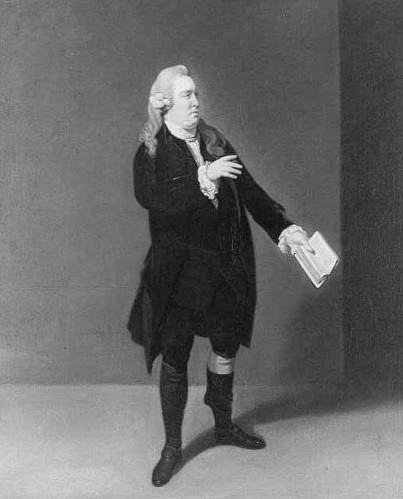The identity of the portly, bewigged gentleman with a book in one hand and an expression of inscrutable discomfort on his face is not immediately apparent. He looks like he might be a barrister inconvenienced by indigestion while in the course of his perorations. In fact he is Hamlet, as played by a certain David Ross on the London stage in the 1750s, pondering whether 'tis nobler in the mind to suffer the slings and arrows of out-rageous fortune, or to take arms against a sea of troubles and by opposing end them.
Johann Zoffany's David Ross as Hamlet is the earliest work in "Dramatic Art: Theatrical Paintings from the Garrick Club", a small, engaging exhibition which has just opened at the Dulwich Picture Gallery. Zoffany's picture is a memorial to the stiff, declamatory style of delivery favoured in the British theatre during the first half of the 18th century, when an unrelieved stateliness of manner and deportment was the goal of every tragic actor. In Ross's interpretation of the role, all Hamlet's trouble and turmoil was apparently displaced to one minute disarrangement of costume. Desmond Shawe-Taylor, in his wry and informative exhibition catalogue, instructs us to look closely at Zoffany's picture and to notice that the actor had carefully rolled down the top of his left stocking - a somewhat grudging concession to Ophelia's description of Lord Hamlet "with his doublet all unbraced, / No hat upon his head, his stockings foul'd, / Ungarter'd, and down-gyved to his ankle". In fact, Ross's single out-of- place stocking was not, for reasons of propriety (or "seemliness", as a theatre critic of the day might have put it), unpeeled quite as low as the text demands, descending only to mid-calf. Judging by his otherwise impeccable appearance, down-gyving did not come...

Acting their socks off
21-01-1997

